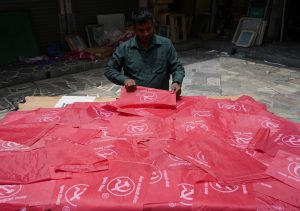Nepal is gearing up for federal and provincial elections to be held on November 20. This is the second election since the promulgation of the new constitution in 2015.
Institutions such as the legislature, judiciary and the President’s Office have been under criticism over the last few years for functioning against democratic norms. Free and fair elections are necessary to breathe new life into Nepal’s nascent democracy and the upcoming vote will be closely watched.
Even as the November elections represent continuity in some areas, they are also expected to see change too.
As in previous elections, in the upcoming one too political parties are forming pre-poll alliances. In the 2017 election, alliance formation had a major impact on the election result. The grand leftist coalition of the Communist Party of Nepal (United Marxist Leninist) [CPN-UML] and the Communist Party of Nepal (Maoist Center) [CPN-MC] swept the election, winning 116 of 165 seats, while the main opposition party, the Nepali Congress (NC), won only 26 seats. This was despite the fact that the left alliance received only 10 percent more votes than the NC. It underscored the significance of alliances, especially in a winner-takes-all election.
Although the upcoming election will see alliances in the fray, in terms of composition the alliances are new. On one hand, there is the ruling coalition, which comprises the NC, CPN-MC, Communist Party of Nepal (United Socialist) [CPN-US] that splintered from the CPN-UML, the Terai-based Loktrantrik Samajwadi Party (LSP), and Rashtriya Janamorcha (RJ). On the other, the CPN-UML has partnered with the Hindu-nationalist Rashtriya Prajatrantra Party (RPP) and Janata Samajwadi Party (JSP), a disgruntled constituent of the ruling coalition.
Both coalitions offer no common ideological or policy foundation but are based on political opportunism. The ruling coalition is focused on keeping the CPN-UML, which emerged as the largest political party in the 2017 election, and its leader Khadga Prasad Sharma Oli at bay.
The number of independent and young professionals who have filed their nominations has risen. With mainstream political parties failing to deliver on their promises and public confidence in them falling, savvy newcomers have entered the fray. The success and popularity of Balendra Shah, the independent mayor of Kathmandu Metropolitan City, in the local election held in May has led to many young professionals throwing their hats in the ring. Rabi Lamichhane, a famed television presenter, has started a new National Independent Party (NIP), which has drawn together several independent candidates.
The chances of the independent candidates are not bright; the two main alliances are still the top dogs. But independent candidates will keep these alliances on their toes.
Gender parity remains a pipe dream. Less than 10 percent of the 2,494 candidates are women. Women politicians have complained that the leadership ignores women candidates. The nomination of women has further dwindled because of the electoral alliances. This time too, parliament will depend on the selection of women leaders under the proportional representation system (which fills 110 seats in the parliament) to ensure the constitutionally mandated one-third representation of women.
October 9 was the last date for filing nominations, and so the election campaign is yet to begin. Neither has any party published its manifesto yet. However, there are some common issues being raised by candidates. They are mostly related to socio-political and economic issues.
There has been a resurgence in the call to reinstate Nepal as a Hindu state. The RPP has consistently led these calls since Nepal became a secular state in 2007. The party became the fourth-largest party in the constituent assembly elections in 2008. However, its vote share has fallen in succeeding elections. In the last federal elections in 2017, the RPP received only 2 percent of the votes. The party aims to benefit from the increasing enthusiasm for a Hindu state. Its larger coalition partner, the CPN-UML, has not publicly called for the restoration of a Hindu state but Oli merged religion with nationalist sentiment and is eagerly courting the Hindu vote.
Another major issue is the Citizenship Bill. The politics behind the failure of President Bidhya Devi Bhandari to promulgate the bill has become a bigger issue than its contents. The proposed legislation discriminates against women, among others. Bhandari, who was a senior leader of the CPN-UML prior to becoming the president, went against the constitution and did not promulgate the citizenship bill. The ruling coalition is citing the president’s unconstitutional blocking of the bill and former Prime Minister Oli’s twin attempt to dissolve parliament to project itself as the upholder of Nepal’s democracy.
Although the presence of the U.S. and China in Nepal has been a subject of debate and discussion in the country, two U.S.-led initiatives, the $500-million Millennium Challenge Corporation and the State Partnership Program, which evoked much controversy, have not emerged as major election issues so far.
The upcoming elections offer reasons for both hope and despair.
The timely elections and youth participation bode well for electoral democracy in Nepal. Yet political leaders and parties remain the same, and offer little hope that they will be better stakeholders of democracy or progress after the elections.
Also, it is likely that no party will win an outright majority. Coalitions will form, but it would be foolhardy to assume that the electoral alliance will also be the ruling alliance.

































